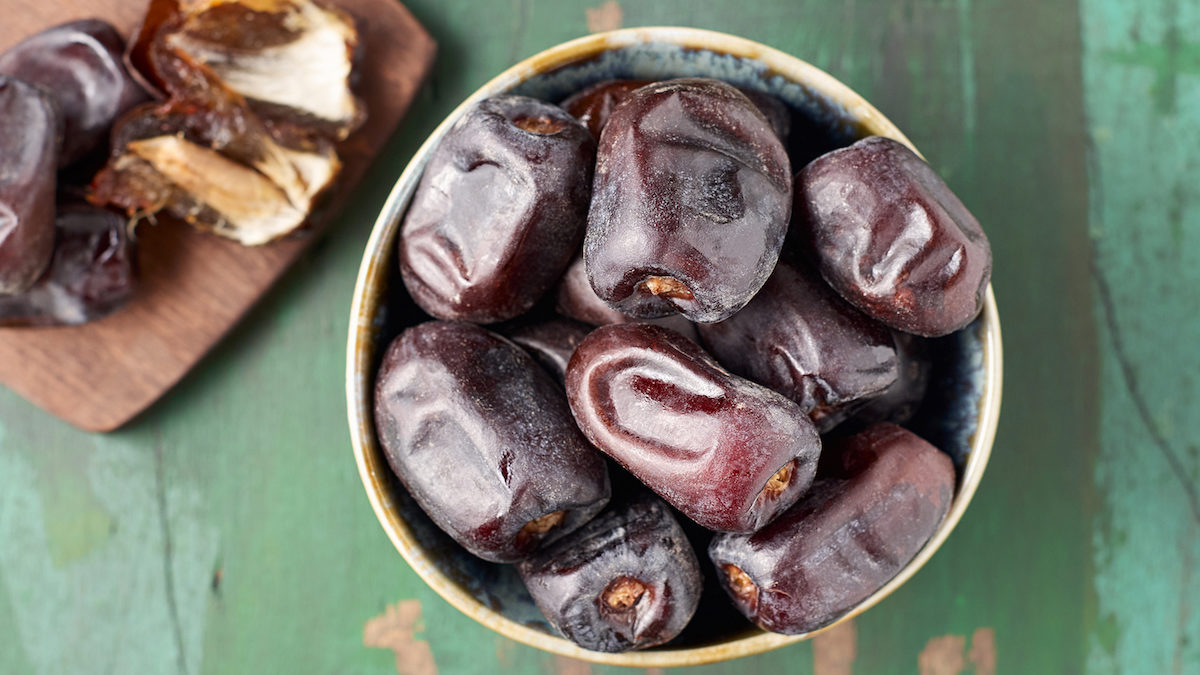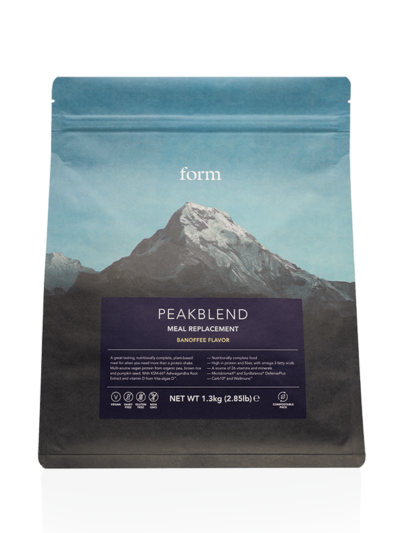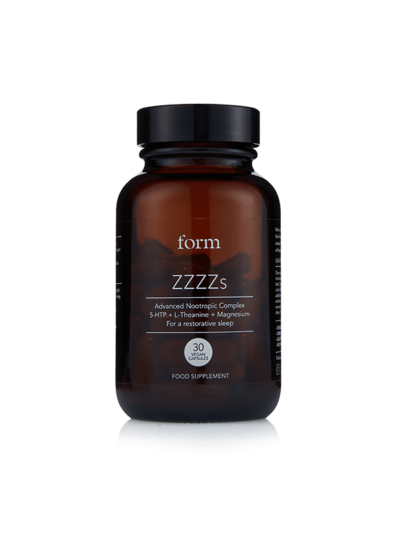Which Sugars Are Healthier Than The Others? The Definitive Ranking Of All That Is Sweet

Sugar has been justifiably demonised for decades, but when it comes to the sweet stuff, not all is created equal. Sometimes the sugar in fruit will get lumped in the same category as something like high fructose corn syrup, for example, because of their natural sugars, also known as fructose. The fact is only fructose from added industrial sugars like table sugar and high fructose corn syrup is a problem, with scientific links to contribute to declining liver function, high blood pressure, and weight gain.
In nature, fructose comes prepackaged with fibre, antioxidants, and phytonutrients, which has been shown to nullify the adverse effects of fructose. The fibre in fruit has a gel-like effect in our stomach and small intestine, which slows down the release of sugars. Phytonutrients in fruit also appear to block the absorption of sugar through the gut wall and into our bloodstream.
As humans we naturally gravitate towards sweetness, which would signify the ripeness of fruit; the sweeter it was, the more nutritious and easier it was to digest. The problem isn’t our desire for sweetness, which is completely natural and beneficial for us – we need glucose to fuel our bodies after all – but we were designed to get these from whole foods like fruits, whole grains, beans, and vegetables.
The problem is when it’s highly processed and used in everything (to enhance taste and make it more addictive). When we eat too much of these highly processed sugars, it blunts our taste buds, so even the sweetest ripe fruits will taste bland. And in turn, we’ll keep chasing that next sugar high.
Added sugars aren’t something you need to be healthy, unlike fruits and vegetables. There are certainly some sugar that is healthier than others though. Below we round up the healthiest options we would recommend, along with some sugars to avoid.
Form Recommends: The Healthier Sugars
Date Sugar
Made from dates, one of the oldest known cultivated plants, date sugar is a powder made with ground-up dried dates. The sugar retains almost all of the benefits of whole dates, including the fibre content which helps slow down sugar absorption. Dates are rich in antioxidants, potassium, magnesium, selenium, calcium, amino acids, and a number of vitamins. Make sure you’re not getting refined versions or anything with other ingredients added, as it will not contain the benefits mentioned above.
Date sugar doesn’t dissolve easily, so in this case (like tea for example) you can use date syrup instead. Date syrup differs from date sugar as it is made by heating dates in water, blending the dates, and pressing the mixture through a filter to strain the pits and any insoluble parts (i.e. the fibre) of the dates. Because of this date sugar is deemed healthier than its syrupy counterpart.

Maple Syrup
One of the best and most traditional sweeteners, the sugar in maple syrup travels quickly to the liver to refuel your glycogen levels.
It takes a whopping 45 litres of maple tree sap water to make 1 litre of maple syrup. It’s important to look at the production of your maple syrup then, as there is a difference between conventional and organic. Conventional ones can have concentrated amounts of additives and contaminants which are used in the maple sap extraction process, effecting the health of the maple trees and the consumer.
On the other side, organic producers are required to follow sustainable methods that won’t harm the trees and the environment. So if you can, look for organic on the label.
Yacon Syrup
Yacon is a species of the perennial daisy and a close relative of the sunflower and the Jerusalem artichoke. Native to South America, yacon syrup has a slower absorption compared to other sweeteners and is a concentrated source of fructans, a molecule that is crucial to feeding our beneficial gut bacteria. It’s also half as sweet as honey and a third of the calories.
Don’t use too much of it though, as it can cause bloating, diarrhoea, flatulence, nausea for some people in high quantities.
Coconut Sugar
Coconut sugar is made from the sap of cut flower buds from the coconut and has been used for thousands of years in South and South-East Asia. Versatile and a great substitute when baking, coconut sugar is a good source of magnesium, potassium, vitamin C, and B vitamins.
The U.N. Food and Agriculture Organization credits coconut sugar as one of the most sustainable sweeteners in the world. Its cultivation restores damaged soil, requiring very little water in the process, while it produces more sugar per acre than sugar cane and uses less than 20 percent of the soil nutrients and water.

Blackstrap Molasses
Derived mainly from cane sugar, blackstrap molasses is the most nutrient-rich option in the molasses family. It is made by boiling down the molasses, a viscous treacle that is created as a byproduct of the sugar-making process. The resulting sediment is a little bitter and very thick; an acquired taste that some people dislike.
Its sugar content is about a third less than regular molasses and contains minerals including iron, calcium, potassium, magnesium and vitamin B6. Blackstrap molasses is also one of the best food sources for easily absorbable iron.
Stevia
Stevia, or Stevia Rebaudiana, is not a chemical sugar substitute but a natural herb from the sunflower family native to Paraguay and parts of Brazil.
It is about 200 to 300 times sweeter than table sugar, yet contains no actual sugar or carbohydrates. It has been safely used by natives for over 1500 years as a culinary sweetener or simply as a treat to tame a sweet tooth. The locals would add the leaves to their local teas and medicines to temper the bitterness.
Nowadays, stevia has become easily accessible as its use as a commercial crop has grown. Only needing a temperate climate with lots of sunshine and rain, it offers a pretty sustainable crop for farmers. The form of stevia that comes to us is much more processed than the straight herb, but at least it doesn’t derive from an artificial chemical base the way that artificial sweeteners do.
Some people might not enjoy the aftertaste of stevia, and if you have allergies to other plants in the Asteraceae family (burdock, sunflowers, artichokes) it’s advised to stay away.
Monk Fruit
In China, monk fruit, or luo han guo, has been used for hundreds of years in medicine and as a natural sweetener. In traditional Chinese medicine, the fruit and extract are used due to its touted anti-inflammatory properties, along with helping to relieve allergies and boosting your immune system. It belongs to the gourd family (with pumpkin, squash, cucumbers, and melons), and like stevia is in the non-caloric natural sweetener category.
The sweet taste in Monkfruit comes from mogrosides, a group of cucurbitane-type triterpene glycosides that make up about one percent of the fruit and is about 150-250 times sweeter than table sugar. It’s not as easy to find as other sugars or sweeteners though. And if you have an allergy to any member of the gourd family then it is advised to steer clear.

Thaumatin
Made from the African katemfe fruit, thaumatin is a rich protein source as well as a sweetener. Since it has such a high potency relative to sugar, the amount used is so small it doesn’t provide measurable calories when used in food.
Like stevia, thaumatin has been used for centuries and shows no signs of danger to human health. Thaumatin is digested like any other protein. It’s listed as being 2000 to 3000 times sweeter than sucrose (sugar) gram for gram. With a slow, lingering sweetness and slight liquorice after-taste, some people might not enjoy the aftertaste of thaumatin (although, like stevia, it’s all down to your taste buds).
Not So Sweet: 6 Sugars To Avoid
Agave Syrup
Beloved by many in the organic food space, agave is highly processed with a chemical process for manufacturing that is nearly as rigorous as the corn refiners used in making high-fructose corn syrup from corn starch. Using the agave glucose and inulin found in the plant’s roots, manufacturers subject it to a chemical enzymatic process (using genetically modified enzymes) that converts it into nearly pure fructose (around 70 to 90 percent).
Fructose is naturally found in fruit (and it’s healthy), but it’s not meant to be consumed in large amounts like in these processed, concentrated, syrup-like forms. The D-fructose in agave is not recognised by the human body as a natural form of fructose that’s used for energy.
When consumed in this processed form, such as in agave syrup, the gastrointestinal tract doesn’t absorb the fructose readily, so it goes straight to our liver. This places an overwhelming load on our liver. The unnatural form of D-fructose can also raise triglyceride levels and increase adipose tissue.

Raw Cane Sugar (Muscovado, Dermerara, Turbinado)
Fresh sugarcane has been consumed traditionally for years for its benefits, either consumed fresh by chewing the stalks or as a juice more recently. Sugarcane is also processed and refined into a sugar form. Raw cane sugar is not technically raw, it still has to be refined and heated to make the sugar.
The juice is boiled until it crystallises, before being moved into a centrifuge where the water from the crystals is removed. The impurities still remain and this is the ‘raw, unrefined’ cane sugar. The natural molasses remain which gives the sugar the golden colour. This unrefined form may contain tiny amounts of vitamins and minerals, but it’s so little you can hardly say they do. Raw cane sugar might be slightly better than white sugar as it’s more ‘natural’, but not by much.
Brown Sugar/White Table Sugar
White sugar used to be mainly made from cane sugar. When the cane sugar is processed, the crystals are transferred to a refinery, and the fibres and molasses in the sugar crystals are separated. The crystals are then melted, which removes the impurities and colour, and a sugary syrup is created. Another round of crystallisation then makes refined sugar. Most refined white sugar is grown with pesticides, while chemicals are added to bleach the sugar, making it white and absorbing any impurities.
Nowadays, a lot of brown and white sugar is made out of beet sugar. This sugar is nearly always genetically modified. Beet sugar contains no nutrients and can be detrimental to our gut bacteria as most contain glyphosate residue, a weedkiller which has been banned by some countries. Brown sugar might seem better than white sugar, but it’s just the same only mixed with cane sugar molasses.
Beets themselves are nutritious but by processing the beets to make beet sugar, it produces the same results as sugar cane i.e. white sugar. Once it’s highly processed and refined, it has no nutritional value. The process of converting sugar beets into white sugar can also include chemical flocculants, animal bone char, and bleaches.

Splenda (Sucralose)
An artificial sweetener, Splenda, or sucralose, can trigger migraines in susceptible individuals. Large scale population studies have also linked the consumption of artificial sweeteners (especially in fizzy drinks), with increased weight gain and abdominal fat gain over time.
Artificial sweeteners have also been found to have adverse metabolic effects, which correlate with pronounced changes in the microbiome that occur within a week of daily consumption. Along with foods, watch out for this ingredient in things like toothpaste and mouthwash.
Aspartame
Another artificial sweetener, aspartame is a molecule made up of an excitotoxin called aspartic acid, which in high concentrations, may stimulate nerve cells so much that they are damaged or killed, and methyl ester, which breaks down into formaldehyde and formic acid. Both of these are not meant to be ingested.
Studies have shown that aspartame can induce weight gain while some researchers believe the main ingredients, phenylalanine, and aspartic acid, stimulate the release of insulin and leptin, hormones that instruct our bodies to store fat. Another study showed that when we ingest a large amount of phenylalanine, it can reduce our serotonin levels, the neurotransmitter that tells us when we’re full.
High Fructose Corn Syrup
Highly processed, high fructose corn syrup is a syrup made from corn starch. High fructose is cheap, tastes sweeter than corn syrup, blends well with other foods, and maintains a longer shelf life, all of which has made it a darling of the junk food industry.
HFCS appears to elevate our triglycerides though, blood fats that increase the risk of heart disease. It has also been shown to contain the heavy metal, mercury, due to how it is manufactured and also has an environmental impact, as growing all the corn needed for the syrup depletes soil nutrients which increases the need for pesticides and fertilizers (which then go on to pollute our water and environment).
_
Enjoyed this read?
Sign up below to receive our weekly inForm digests for more interesting articles like this. We’ll never share your email and you can unsubscribe any time.
_


















